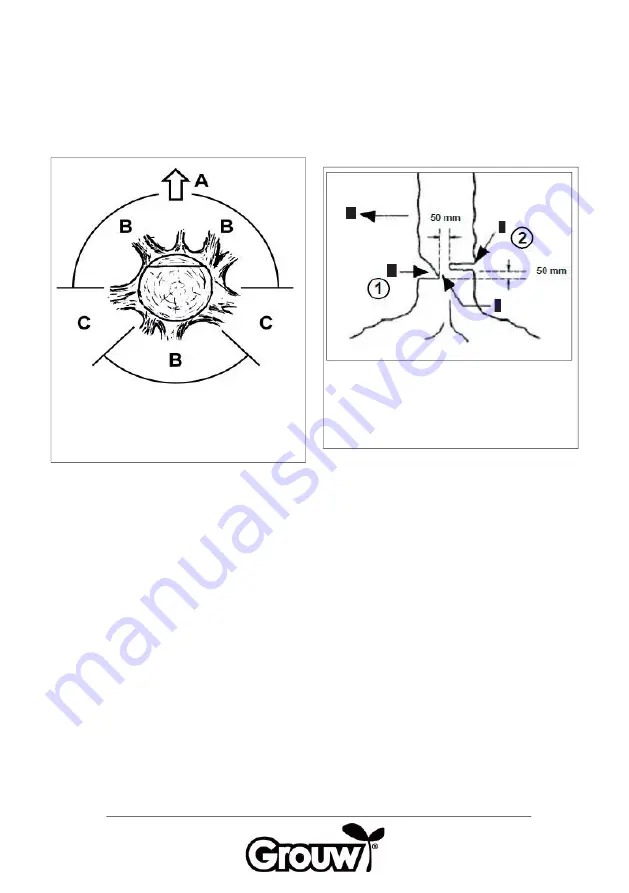
58
Felling
Plan and clear a path of retreat (C) before
beginning felling work. The path of retreat
must stretch back and diagonally to the
furthermost point of the expected line of fall
(A) as illustrated.
Before starting felling, take account of the
tree’s natural slant, the location of large
branches and the wind direction to assess
which way the tree will fall.
Remove any dirt, stones, loose bark, nails,
clips and wires from the area on the tree
trunk where the felling cut is to be made.
Cutting the lower notch
Cut the notch (D) 1/3 of the way into the tree,
perpendicular to the direction of fall (A) as
illustrated. First cut the bottom horizontal
notch. This will help to ensure that the saw
chain or blade does not get stuck when
making the second notch.
Felling back cut
Make the felling back cut (E) at least 5 cm
above the horizontal notch. Keep the felling
back cut parallel to the horizontal notch.
Make the felling back cut so that there is
suffi cient trunk left to function as a hinge.
The hinge (F) helps to avoid the tree turning
and falling in the wrong direction. Therefore
do not cut through the hinge.
If the felling cut comes close to the hinge, the
tree will start to fall.
A. Fall direction
B. Risk area
C. Path of retreat
A. Fall direction
D. Incision
E. Felling back cut
F. Hinge















































